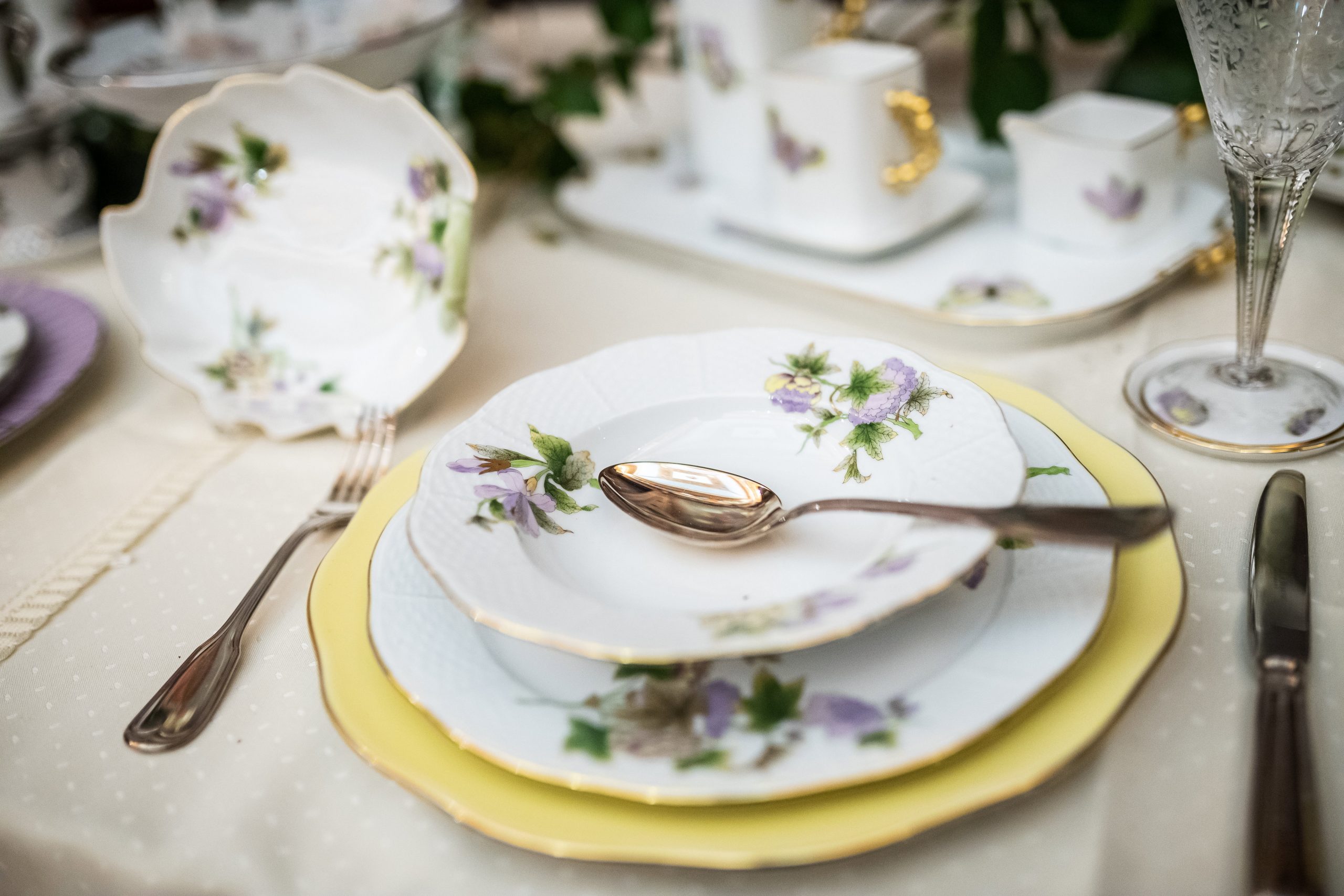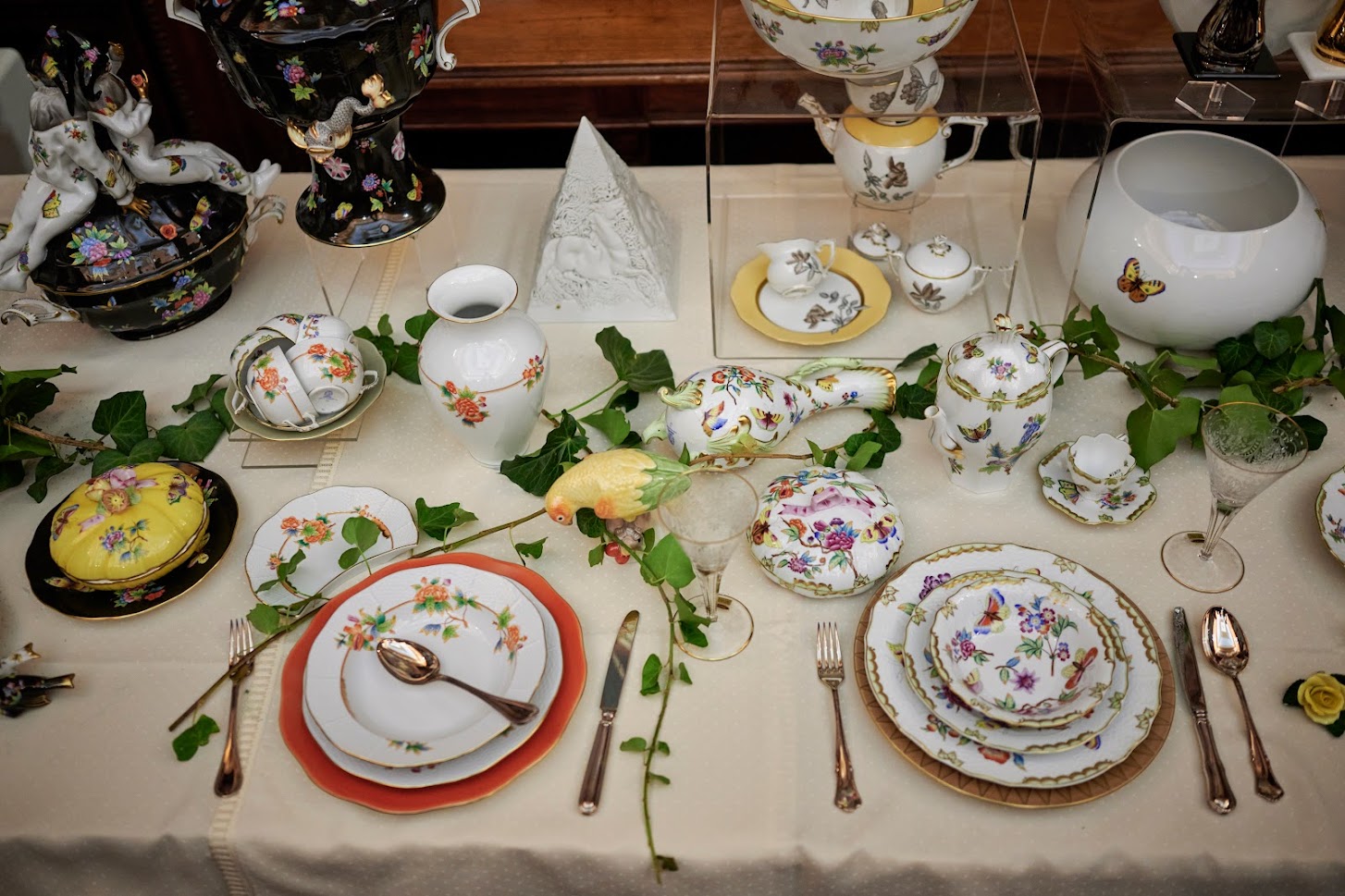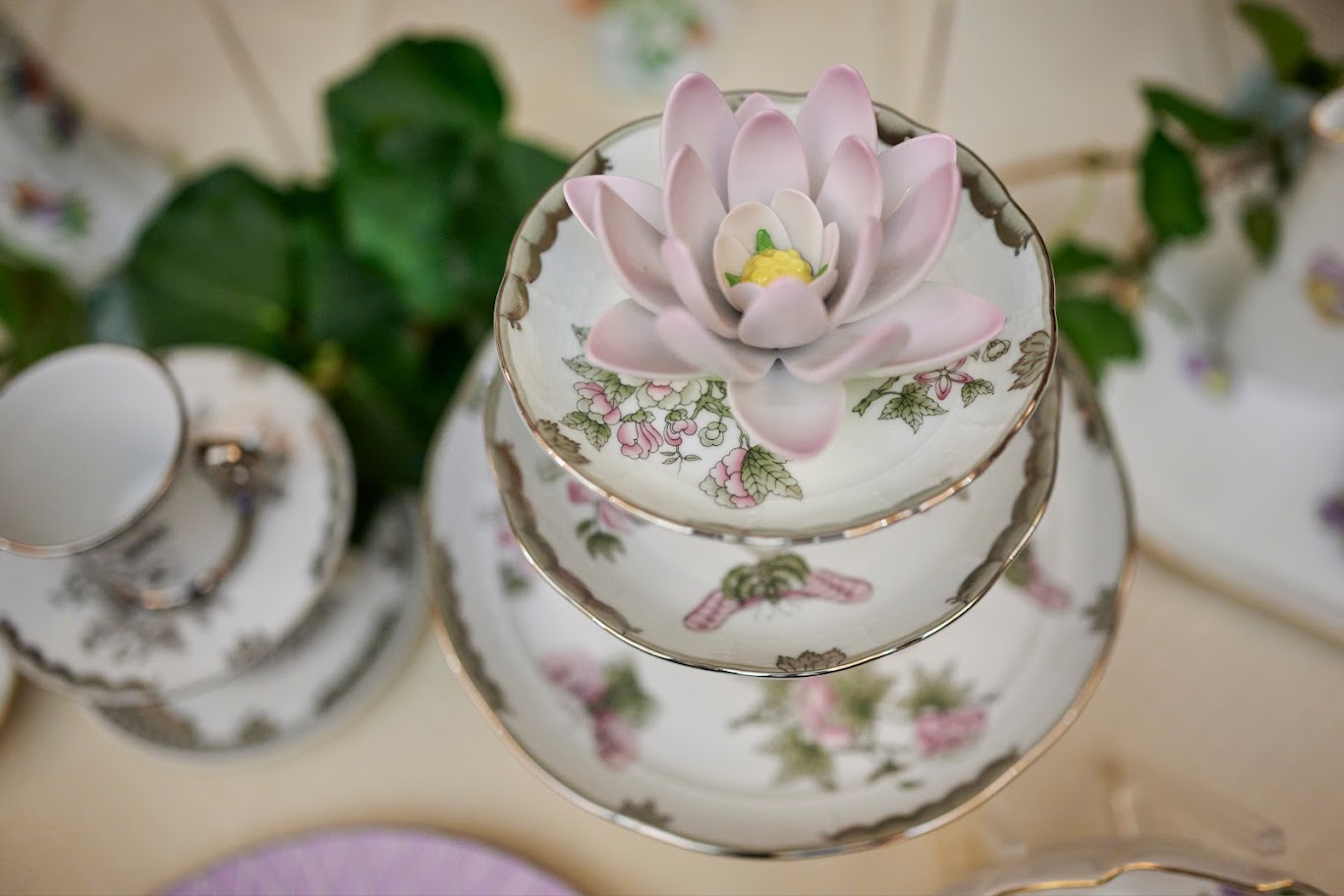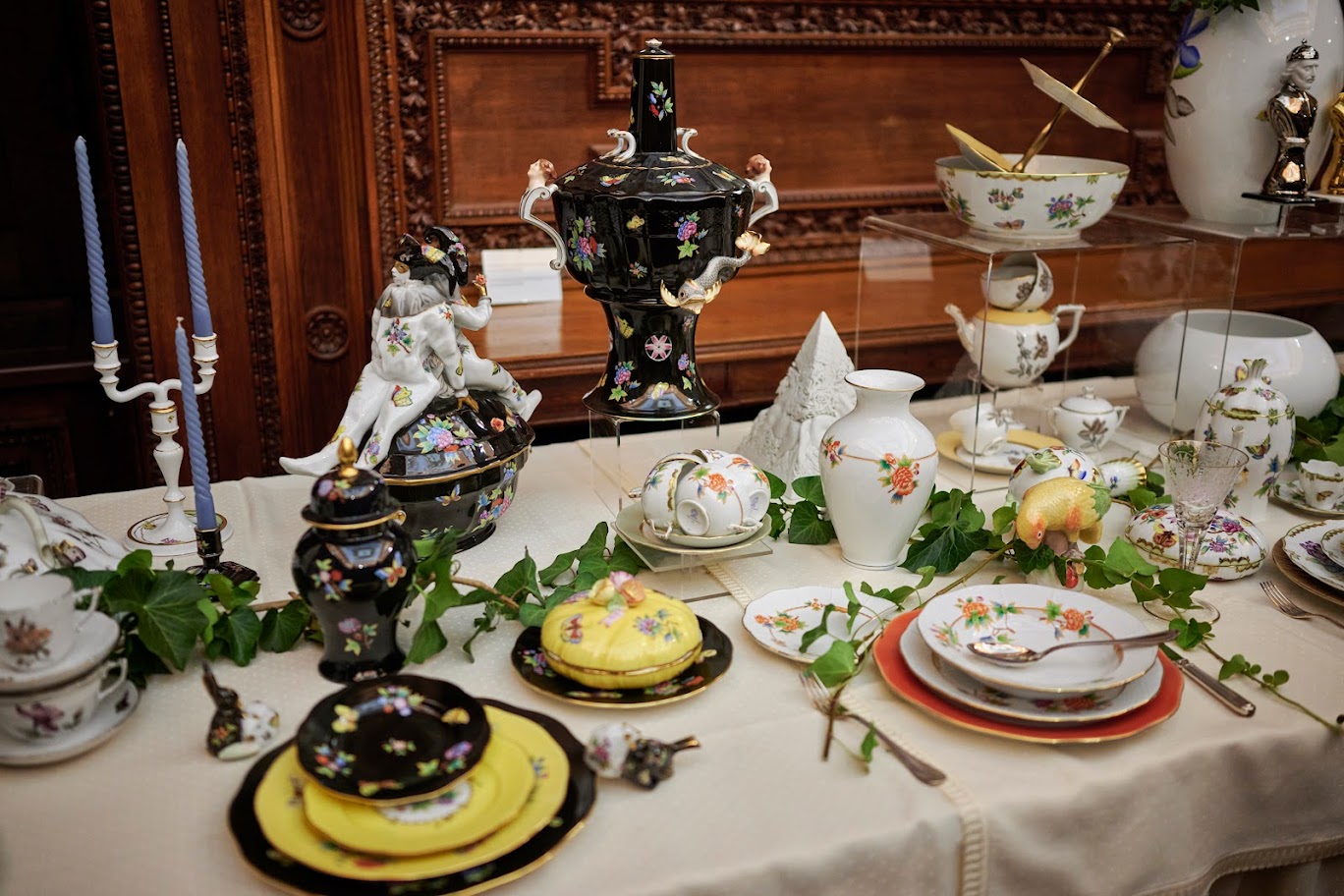
An exhibition of Herend porcelain titled Royal Everyday Life opened at the Hungarian National Museum on Tuesday.
Herend porcelain is one of Hungary’s best-known and most recognized brands, sold in almost every corner of the world, said László L. Simon, director general of the museum, at the opening of the exhibition on Tuesday.
The current exhibition features a Victoria evolution, as the table set with porcelain features pieces starting from the classic Victoria pattern of 1851, also including those painted with the Royal Garden pattern that were made for Prince William’s wedding.

Photo: Facebook/Magyar Nemzeti Múzeum
Attila Simon, CEO of Herend Porcelain Manufacture, said that they produce around 300,000 pieces of porcelain a year. He stressed that while maintaining tradition, the company is also constantly looking for opportunities for renewal, and in addition to its 64 million different products, the manufacture also produces around 400 new creations every year.
Duncan Graham, President of the British Chamber of Commerce in Hungary, said that Herend Porcelain is known to the British as one of the most beautiful in the world. He recalled that
the gold medal-winning Chinese-style motif of butterflies, flowery branches and bright and cheerful colors, which was presented at the London World Fair, is one of the most famous Herend designs.
The show was opened by Queen Victoria in London on 1 May 1851, with around 100,000 objects exhibited over a distance of more than sixteen kilometers and 15,000 exhibitors. The exhibition featured a number of objects, including the Koh-I-Noor diamond and an 8.5-meter-high crystal fountain.

Photo: Facebook/Magyar Nemzeti Múzeum
The Victoria pattern on display at the National Museum’s temporary exhibition dates back almost as far as Herend porcelain. Born under Chinese influence, the pattern of stylized butterflies and flowering branches represents the richness of color and decoration that has characterized the porcelain manufacture’s painting style from the very beginning. The most prominent element is the peony, which originated in China and became one of the most popular motifs in early porcelain when it arrived in Europe. The variety of butterflies and the varied forms of the Pentecost rose created the possibility of creating an individual image so that despite its Chinese origin, the pattern gives a Hungarian impression, evoking the wit and bustle of Hungarian forests, fields, and village gardens.

Photo: Facebook/Magyar Nemzeti Múzeum
Queen Victoria treasured the Herend porcelain tableware, which was only set in the dining room where she dined with her husband, Prince Albert. The later members of the English royal family were also fond of Herend works. The Victoria pattern, used for more than 170 years, is a showpiece on other ornaments such as the bonbonnière, the ornamental plate, and the lamp vase, in addition to the dinner, tea and mocha sets.
The Victoria collection has been reborn over the decades in countless variations and colors, the most recent revival being a Herend porcelain set painted in the Royal Garden pattern, which was the official wedding gift of Hungary to Prince William and Princess Catherine.
Featured photo via MTI/Mónus Márton